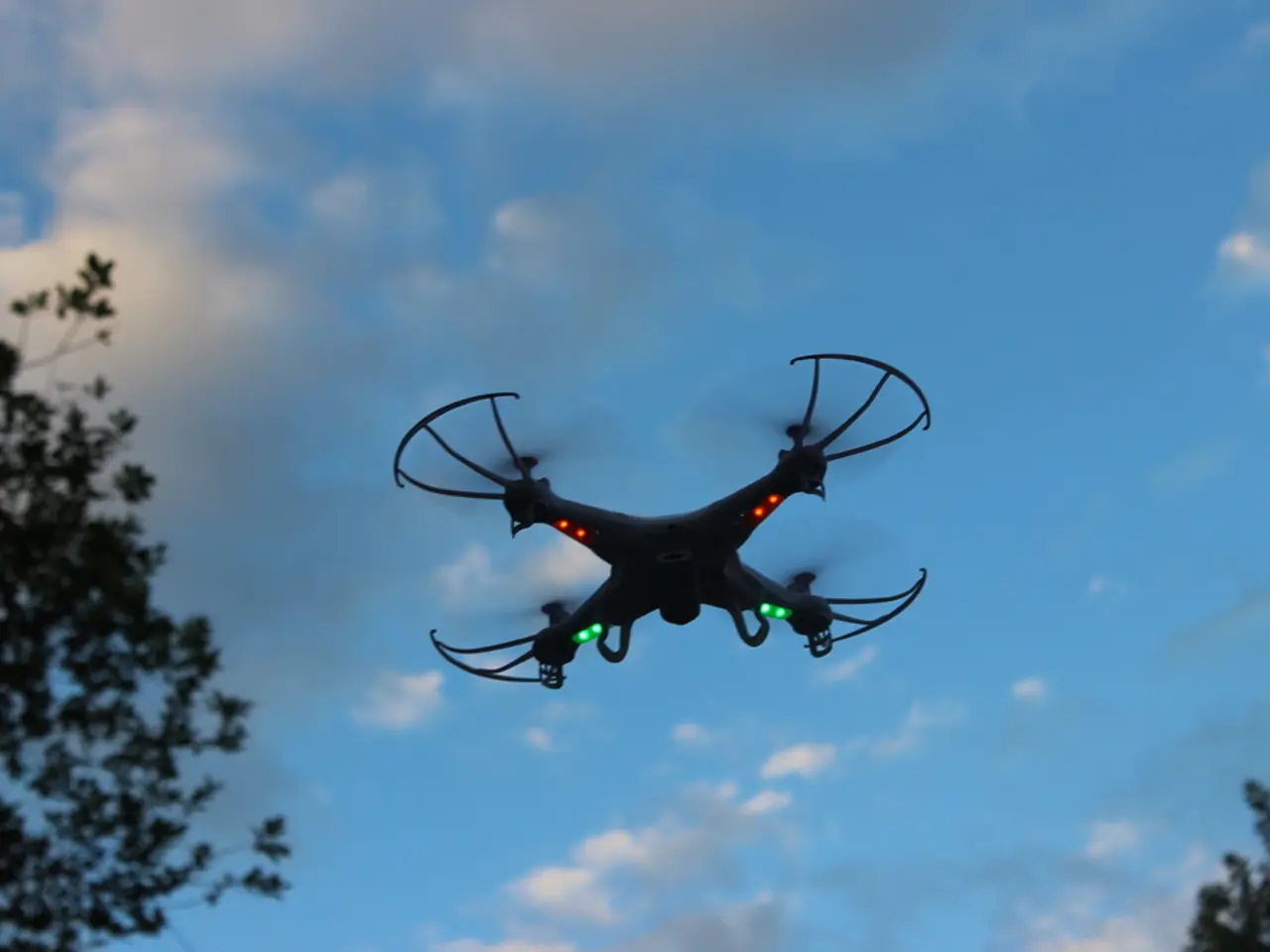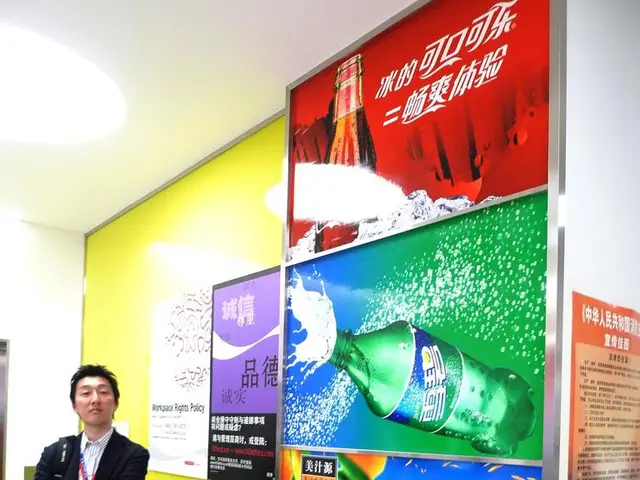Industries Embracing Thermal Drone Technology by 2025
In the year 2025, thermal drone technologies have become a common sight across various industries, revolutionising the way businesses operate. From energy and construction to agriculture, public safety, supply chain, and wildlife monitoring, these drones are providing significant benefits that range from improved safety to increased efficiency and cost savings.
In the energy sector, thermal drones play a crucial role in maintaining the health of solar panels, wind turbines, and high-voltage substations. By conducting inspections using infrared imaging, they can detect hot spots, damaged modules, and outages, thereby ensuring compliance, improving reliability, and preventing costly failures. This is particularly advantageous as it keeps workers out of dangerous environments.
Construction and infrastructure sectors also benefit from the rapid scanning capabilities of thermal drones. These drones can detect issues such as heat leaks, structural anomalies, or compliance adherence, accelerating workflows and reducing manual inspection time.
In agriculture, thermal imaging from drones is used to monitor crop health, detect irrigation issues, and assess livestock conditions. This facilitates precision agriculture practices that increase yields and resource efficiency.
Public safety and search & rescue operations also benefit from thermal drones. They assist in locating heat signatures in active fire zones or during search operations, allowing responders to operate safely from a distance and cover large areas quickly.
Supply chain and logistics industries have also integrated thermal drones into their operations. Equipped with thermal sensors and AI-enabled tracking, these drones enhance warehouse and transportation route security by monitoring for theft, damage, or safety concerns in real time. They also improve inventory management efficiency by automating inspections.
Wildlife monitoring is another area where thermal drones prove invaluable. They facilitate non-invasive tracking of animal populations and behaviour, aiding conservation efforts, especially at night or in dense habitats.
Across these industries, thermal drones offer improved safety, faster inspections, predictive maintenance, operational cost savings, and regulatory compliance. A reliable thermal drone setup typically ranges from $7,000 to $25,000 USD, depending on resolution, features, and flight capabilities.
Thermal drones are especially valuable in sectors with aging infrastructure, remote assets, or hazardous conditions where manual inspections pose a risk. In the oil and gas sector, for example, thermal drones provide a fast, safe, and accurate way to inspect pipelines, storage tanks, flare stacks, and refineries.
AI-powered analytics and automated flight planning make it easier to collect, process, and act on thermal data. As automation and smart monitoring expand across industries, thermal drones are becoming a core part of the asset management toolkit.
In low-light or zero-visibility conditions, thermal drones excel, making them especially useful for emergency services and surveillance. They reduce the need for ladders, scaffolding, or confined space entry, improving worker safety.
In agriculture, thermal drones are used to monitor plant health, irrigation efficiency, and soil conditions. By integrating thermal inspections into routine workflows, manufacturers can optimise maintenance schedules, reduce emergency repairs, and keep production running smoothly.
In summary, thermal drone technology in 2025 is a transformative tool across diverse sectors, enhancing safety, efficiency, cost-effectiveness, and data quality, thereby facilitating smarter operations and better outcomes at scale.
- The manufacturing industry is adopting thermal drone technology for its numerous benefits, such as increased safety, efficiency, and cost savings.
- In finance, thermal drones can assist in inspections of financial institutions' facilities, ensuring they comply with regulations and operate securely.
- The energy industry's use of thermal drones extends beyond solar panels and wind turbines, to include the inspection of power lines and hydroelectric dams.
- In the retail sector, thermal drones can help manage inventory by identifying stock issues or theft in real time.
- For businesses in the transportation industry, thermal drones can monitor vehicle fleets, ensuring they are running smoothly and efficiently.
- Cybersecurity professionals can use thermal drones to detect heat signatures of unauthorized access to secure facilities or critical infrastructure.
- In the lifestyle sector, thermal drones can contribute to home improvement projects by scanning home exteriors for issues such as heat leaks or structural anomalies.
- The fashion-and-beauty industry can use thermal drones for quality control inspections of fabrics, ensuring they meet industry standards.
- Thermal drones can assist food-and-drink manufacturers in monitoring food storage facilities for temperature fluctuations or contamination.
- Thermal drones can aid investors and wealth managers in property inspections, helping them make informed decisions.
- For home-and-garden enthusiasts, thermal drones can help with landscaping projects, pinpointing issues such as irrigation problems or diseased plants.
- The introduction of thermal drones in the business world has further democratized data collection and analytics, making it accessible to businesses of all sizes.
- Thermal drones can automate data collection for personal finance management, helping individuals optimize their budgets and savings.
- The banking and insurance sectors can use thermal drones to assess property damage during natural disasters, accelerating claims processing.
- In the world of gadgets, thermal drones can be used for product quality inspections, ensuring they meet safety and performance standards.
- With the rise of data-and-cloud computing, thermal drones can play a role in monitoring server rooms for overheating or cooling issues.
- In the technology industry, thermal drones can contribute to research on artificial intelligence and robotics, helping engineers optimize their designs.
- For individuals seeking personal-growth and self-development, thermal drones can aid in surveying land for homesteading projects or off-grid living.
- In the realm of general news and current affairs, thermal drones can be used to gather footage from scene locations that may be dangerous or inaccessible for journalists.
- Thermal drones can assist the crime-and-justice sector in tracking suspects, locating evidence, and monitoring prison facilities.
- In the education and self-development field, thermal drones can be used for educational purposes, such as visualizing temperature changes in various environments.
- Thermal drones can contribute to responsible gambling campaigns by monitoring activities in casinos and identifying suspicious patterns.
- The sports industry can use thermal drones to monitor athlete performance, particularly in high-impact sports, to prevent injuries and optimize training programs.
- In the realm of entertainment, thermal drones can be used in filming TV shows and movies, capturing footage in challenging or dangerous environments.
- Thermal drones can aid in career development by providing unique insights during job site inspections or industry tours.
- In the casino-and-gambling industry, thermal drones can be used to monitor gaming floors for cheating or fraudulent activity.
- With the rise of online lotteries, thermal drons can ensure secure storage of tickets and randomly selected numbers.
- In popular culture, thermal drones may become a key prop in sci-fi and fantasy films or TV shows, symbolizing advanced technology and surveillance.
- Thermal drones can help travelers locate tourist attractions or find their way in low-visibility conditions, such as foggy or dark environments.
- In the automotive world, thermal drones can inspect car components, ensuring they meet safety and performance standards.
- Thermal drones can be useful in the book publishing industry for detecting quality issues in printing presses or bindery machines.
- Pet lovers can use thermal drones to locate missing pets in difficult-to-access areas or to monitor their pets' health.




